The Jewelry Detective: Turquoise? In Winter? Groundbreaking, She Wrote
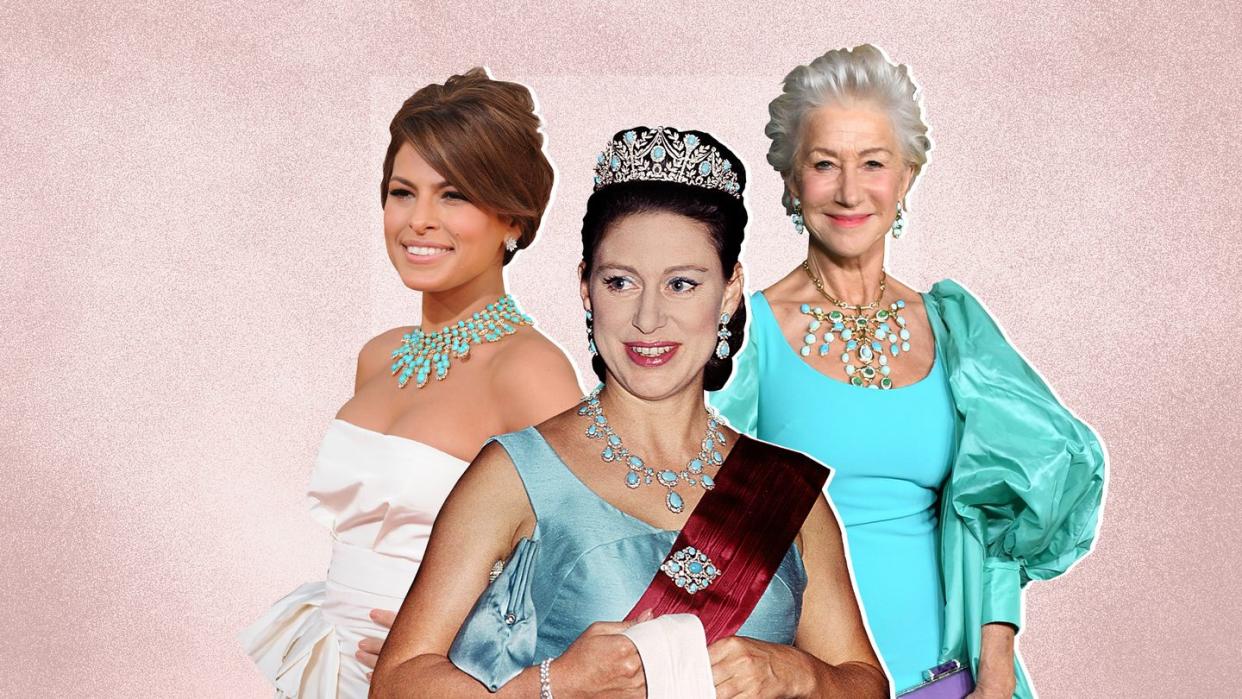
It’s that age-old question: why choose a turquoise bib when you could a diamond necklace? Eva Mendes, Rachel Zoe, and the Van Cleef archive hold the answers.
In the annals of red-carpet jewelry dressing, Mendes’s 1974 turquoise Van Cleef bib ranks high. The look, styled by Zoe for the 2009 Golden Globes, is frequently cited as one of the best red carpet jewelry moments in history. How does that kind of magic happen?
“To be honest,” Zoe tells T&C, “it still resonates very strongly in my mind as a favorite styling moment in my career. She looks insanely gorgeous in the entire look, but I think this lives on because this archival Van Cleef piece was so extraordinary and unique but most of all, unexpected, as opposed to the more typical diamond pieces seen on red carpets. It made such a major jewelry statement against the simplicity of the white Dior gown. It felt very old Hollywood but still modern and cool. I have always loved major turquoise stones. I was immediately drawn to the Van Cleef Panka necklace and was obsessed with styling a look for it—the combination of stones and the setting felt so unbelievably glamorous.”
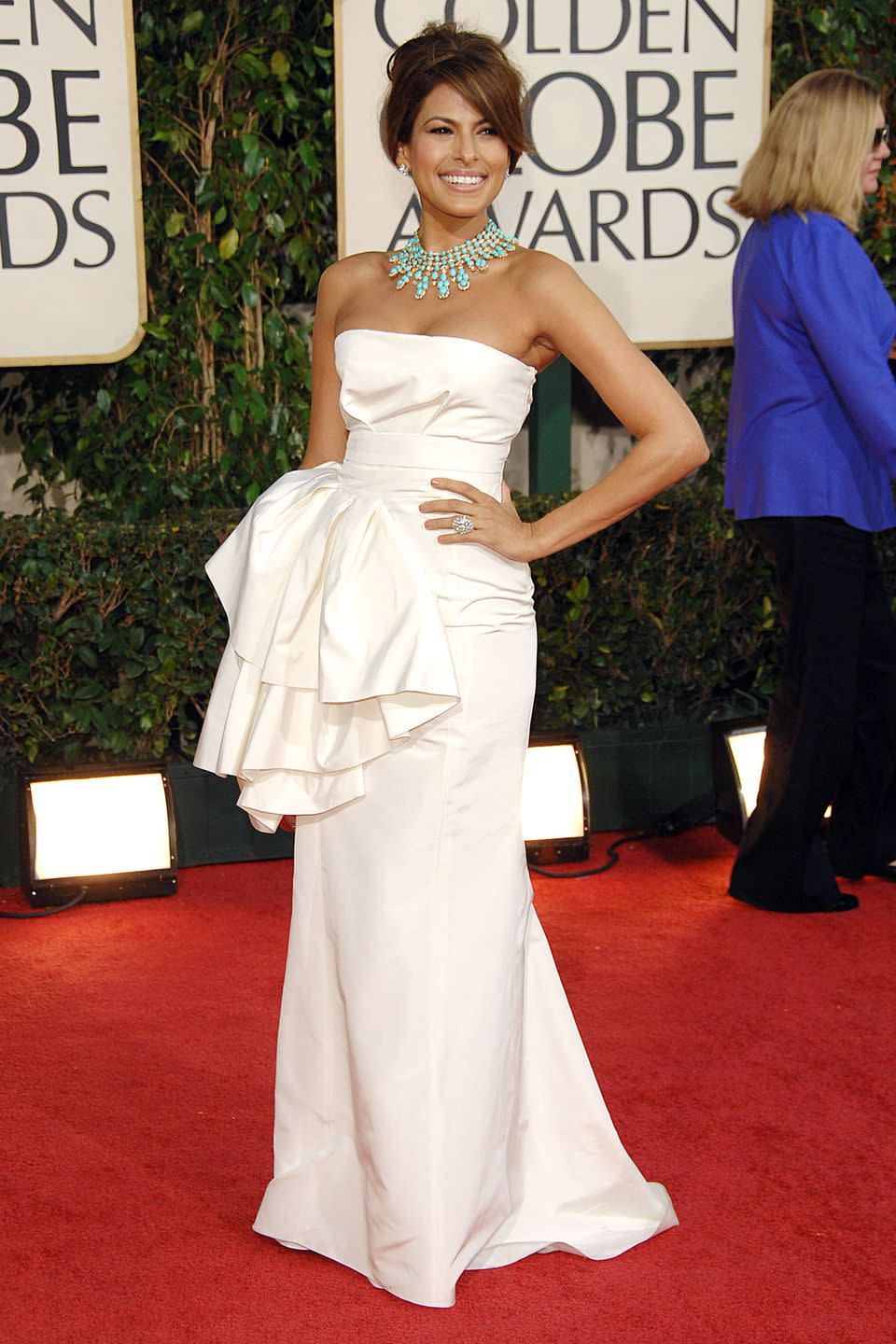
History—and recent spottings of turquoise in jewelry collections—supports Zoe’s choice. Turquoise was prized for its beauty and protective powers by the ancient Egyptians and has long been treasured by Native American cultures. Queen Victoria also really loved it. When it came time to choose her bridal party gifts, she decided to hand out turquoise brooches. (Being one of the world’s great jewelry influencers, the Queen’s choice set off a major 19th century turquoise trend.) And some of jewelry’s most prized pieces include this ancient stone. But bring up the material and the topic is almost guaranteed to elicit the question: “But isn’t turquoise a ‘summer jewel’?”
“I definitely tend to wear turquoise, coral, and jade more in the summer because it goes so well with a tan!” Zoe says. “Paired with a maxi dress and air-dried hair—for me, it really creates an effortless summer look. That said, I think turquoise in all its shades and beauty can look extraordinary any time of year, worn casually with jeans and a tee or with a major gown.” Case in point: Cameron Diaz in fuchsia Dior and vintage turquoise from Fred Leighton at the Met Ball, also styled by Zoe.
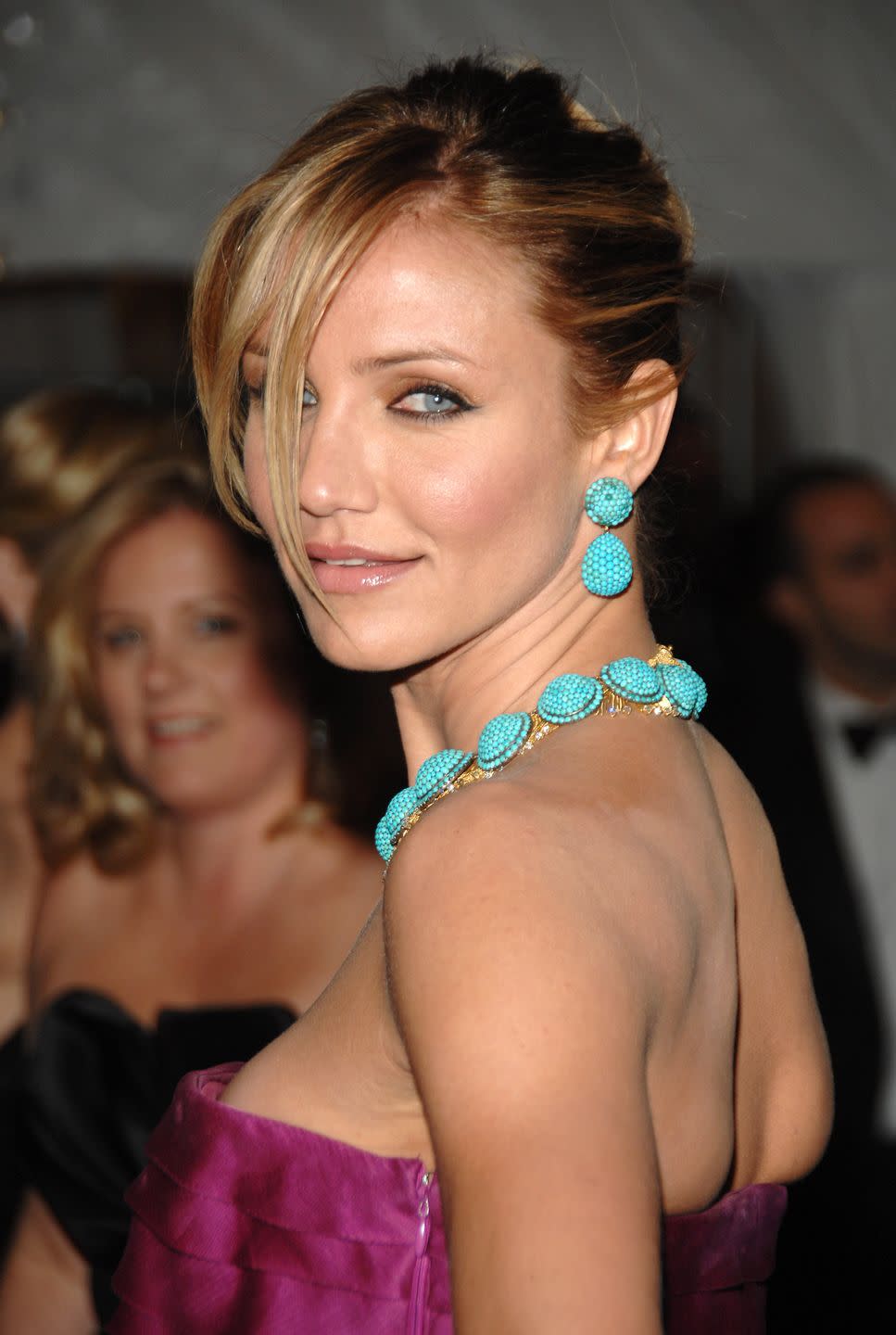
But to truly understand the role turquoise has played in jewelry and why it deserves much more than a seasonal presence, we should look further back. See: Princess Margaret’s Triumph of Love tiara, an intricately designed tiara of diamond and Persian turquoise, created by Garrard in 1900 and given to the Queen Mother as a wedding gift by her father-in-law King George V. Queen Margrethe of Denmark’s three sets of beloved turquoise jewelry, one believed to have belonged to Catherine the Great. Marjorie Merriweather Post’s Van Cleef turquoise tiara on view at the Smithsonian, the one that had belonged to Empress Marie Louise, wife of Napoleon (the original had emeralds). The Duchess of Windsor’s memorable Cartier amethyst and turquoise bib. That turquoise and diamond Schlumberger Babe Paley wore to Eisenhower’s Inaugural Ball. The turquoise pieces in the Iranian royal family collection. And all those prized and highly collectable treasures from the Art Deco Egyptian Revival.
Turquoise in rare jewels, in other words, goes way back. It is serious—and it is hardly just for summer. So when a friend asks, as one of ours did recently, when they can wear their new turquoise drop earrings, answer firmly: “Now.”
“Turquoise is very much associated with Ancient Egypt and has been used in jewelry for thousands of years. The Metropolitan Museum of Art has several ancient pieces that incorporate turquoise and that feel surprisingly modern,” says third-generation jewelry dealer Lee Siegelson. “These were the kinds of pieces Cartier was looking at in the 1920s when they made their Egyptian Revival pieces. They were not only the greatest turquoise pieces, but also some of the greatest jewelry pieces ever made. The Cole Porter Egyptian Suite featuring a belt buckle and bracelet incorporating faience antiquities includes turquoise. I also owned an extraordinary Bulgari turquoise suite from the 1960s. Bulgari modernized the idea of court jewelry, putting turquoise where you would typically have found diamonds or emeralds.”
Given this illustrious position in jewelry history, and in the history of the world, how did turquoise become so strongly associated with casual beads on a summer beach? “Like rose quartz and rock crystal,” Siegelson says, “turquoise is one of those materials that is not inherently valuable, like a diamond, so it can appear in any level of jewelry. The beauty of the design and quality of the craftsmanship is what elevates it, making real jeweled works of art, which are more valuable versus their components taken apart.”
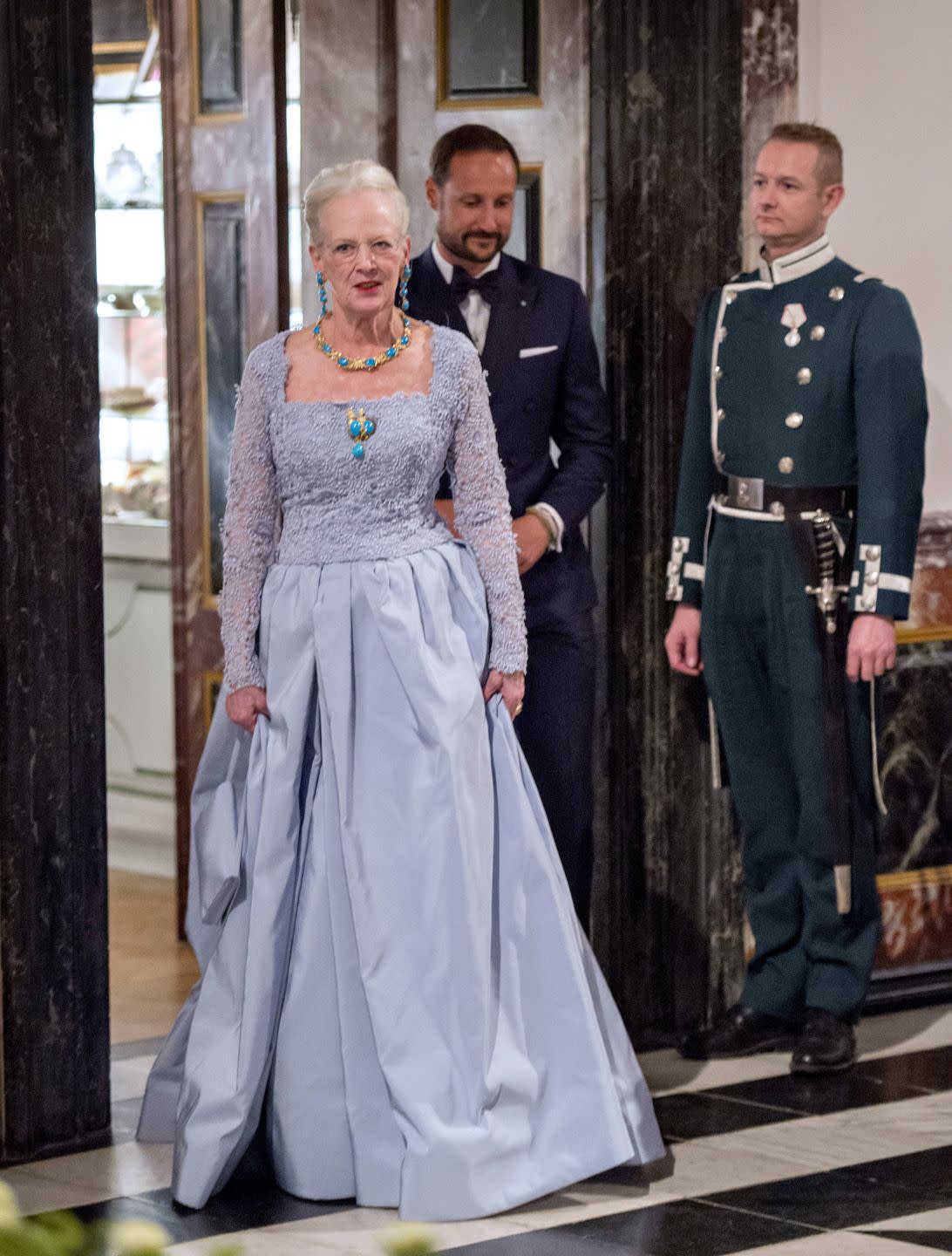
It could also be as simple as this: “The bright color can throw people off,” says Claibourne Poindexter, senior specialist and VP of jewelry at Christie's. Though he also offers a more concrete explanation: “It could have been a matter of oversupply. A lot of the great mines dried up and lesser quality, treated turquoise began to appear on the market. To find turquoise that has not been treated is difficult.” But, he adds, “Persian and Sleeping Beauty turquoise are of course the most prized, but really this is more about how it is done. A great turquoise piece is more about where art meets jewelry and not just about where scarcity meets jewelry.”
Which leads to a current mystery. The stone has begun to appear with increasing frequency in jewelry collections, particularly in High Jewelry. It was there with diamonds and emeralds and rubellites in Cartier High Jewelry necklaces presented in May, and then again in the next chapter of the collection, shown in January, dominating two one-of-a-kind pieces: a High Jewelry necklace that also showcased carved coral, and a necklace of aquamarines and amethyst.
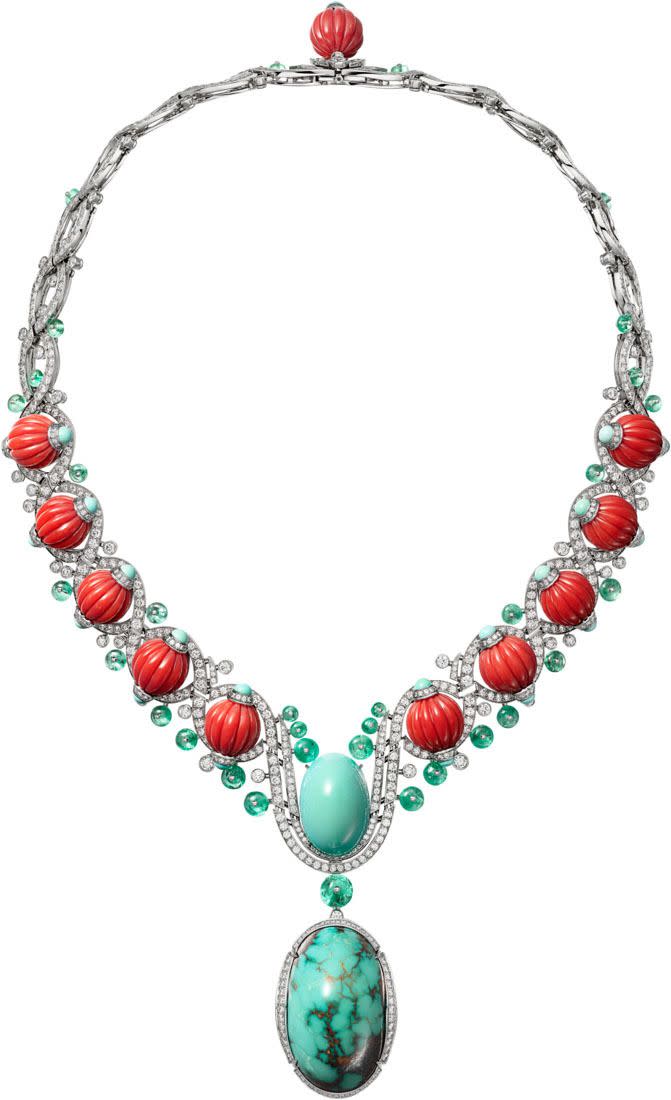
Van Cleef’s 2023 High Jewelry collection inspired by the Grand Tour featured several turquoise-forward pieces and a new flock of Tiffany Schlumberger Bird on a Rock showcased several colorful winged jewels. Bulgari too used the stone in its High Jewelry shown in Venice, including a blockbuster emerald and turquoise medallion. “It’s a mix of the ancient and the modern,” creative director Lucia Silvestri said at the time. “That’s very Bulgari.” And turquoise is, once again, very now.
But if the best mines are depleted, how to explain the re-emergence of turquoise? These one-of-a-kind High Jewelry creations use only the top stones on the market which means these pieces must include stones from the prized mines of Persia and American Sleeping Beauty turquoise. How? “There is still some high quality supply available. No new sources have been publicly announced,” says one jewelry insider. So then how to explain the stone’s presence in ways not seen since the 1960s? “There has definitely been a rise in appetite for vibrant blue that started with the popularity of the Paraiba tourmaline. But there is also a more practical possibility: turquoise allows for pieces of a large scale to have a colored surface without the far more expensive and labor-intensive process of pavé. The same principle is behind the rise of titanium and aluminum.
"Not the most romantic story,” admits our source, “but a commercial decision, like fabric choices in fashion.” There is also a strong shift in the jewelry world towards unexpected stones and materials, ones that make clients ask, “Wait what is that?” And that adds a kind of rarity to the piece that more obvious stone choices do not. Status becomes not only the ability to access a piece at this level, but also to understand the value of the rare and unusual. It’s the “if you know you know” effect.
Will we see any of these new High Jewelry pieces on the red carpet at the Oscars this Sunday? It would certainly make news and Instagram feeds—that irresistible bright blue with all its royal and historical associations will do that. The choice of turquoise—or any surprising stone or material—showcases what we call Jewelry Ambition: the willingness to dare and the knowledge required to do so successfully. See: Cate Blanchett in turquoise Tiffany & Co. at the 2015 Oscars, Sofia Vergara in that Lorraine Schwartz bib at the 2014 Emmys, Helen Mirren in the David Webb Tree of Life necklace at a 2019 premiere.
And if anyone is worried about seasonality, take stock of Lee Siegelson’s advice: “Turquoise is appropriate anytime.” Just ask Queen Margrethe—or Eva Mendes.
You Might Also Like
